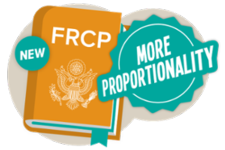Proportionality-based eDiscovery is a goal that all judges and corporate attorneys want to attain. Under Federal Rule of Civil Procedure 26(b)(1), parties may discover any non-privileged material that is relevant to any party’s claim or defense and proportional to the needs of the case. However attorneys representing enterprises are essentially flying blind on this analysis when it matters most. Prior to the custodian data being actually collected, processed and analyzed, attorneys do not have any real visibility into the potentially relevant ESI across an organization. This is especially true in regard to unstructured, distributed data, which is invariably the majority of ESI that is ultimately collected in a given matter.
If accurate pre-collection data insight were available to counsel, that game-changing factor would enable counsel to set reasonable discovery limits and ultimately process, host, review and produce much less ESI. Counsel can further use pre-collection proportionality analysis to gather key information, develop a litigation budget, and better manage litigation deadlines. Such insights can also foster cooperation by informing the parties early in the process about where relevant ESI is located, and what keywords and other search parameters can identify and pinpoint relevant ESI.
The problem is any keyword protocols are mostly guesswork at the early stage of litigation, as, under outdated but still widely used eDiscovery practices, the costly and time consuming steps of actual data collection and processing must occur before meaningful proportionality analysis can take place. When you hear eDiscovery practitioners talk about proportionality, they are invariably speaking of a post-collection, pre-review process. But without requisite pre-collection visibility into distributed ESI, counsel typically resort to directing broad collection efforts, resulting in much greater costs, burden and delays.
X1 recently hosted a webinar featuring prominent industry experts including attorney David Horrigan of Relativity, Mandi Ross of Prism Litigation Technology and Ben Sexton of JND eDiscovery, addressing the issues of remote ESI collection and proportionality. David Horrigan outlined in succinct detail the legal concepts of proportionality under the Federal Rules, the Sedona Principles and as applied in case law. Mandi Ross explained how she applies proportionality when advising lawyers and judges through custodian interviews, coupled with detailed keyword search term analysis based upon the matter’s specific claims and defenses. She noted that technology such as X1 greatly enables the application of her practice in real time: “The ability to index in place is a game changer because we have the ability to gain insight into the data and validate custodian interview data without first requiring that data to be collected.”
The webinar also featured a live exercise performing a pre-collection proportionality analysis on remote employee data with X1 Distributed Discovery. The panelists provided comments and insights contrasting what they saw with the outdated, costly, and time consuming process involving manual data collection and subsequent migration into a hardware processing appliance. The later process negates counsel’s ability to conduct any meaningful application of proportionality, without first incurring significant expense and loss of time. A recording of the webinar can be accessed here.
